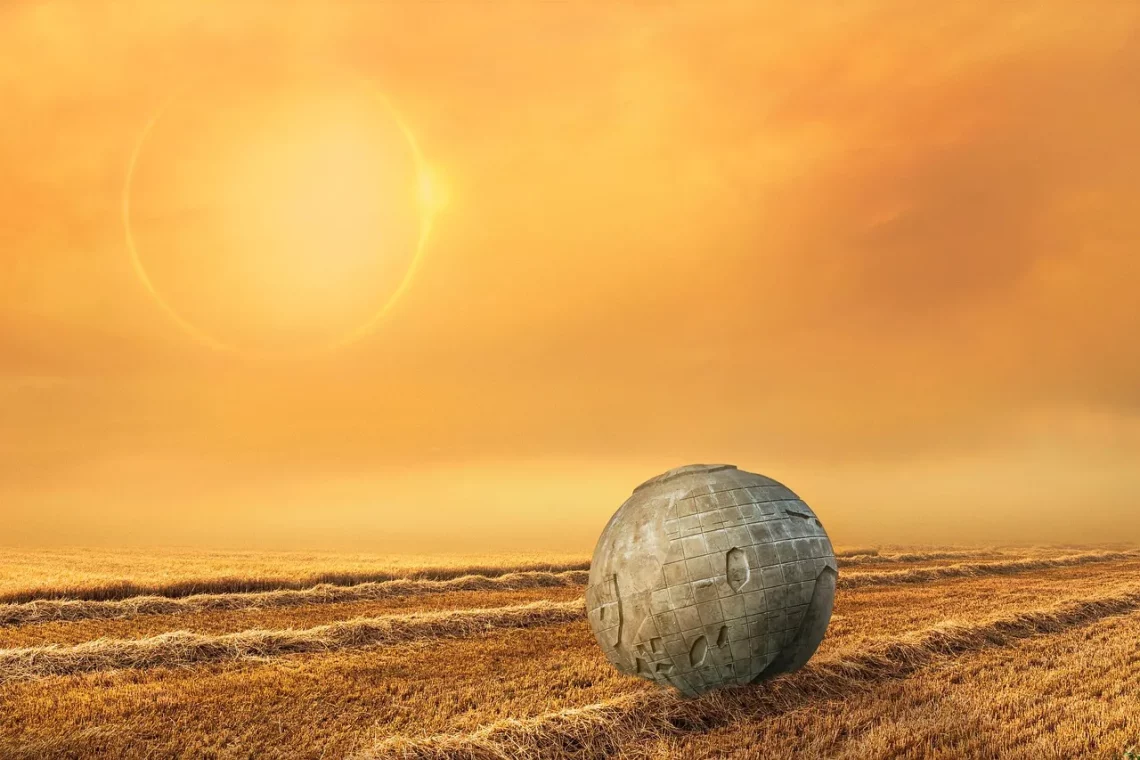
Elemental Laughs: Hilarious Periodic Table Puns to Brighten Your Day
Laughter is a universal language, transcending barriers and connecting people through shared joy. One unexpected source of humor that often brings a smile to faces is the periodic table of elements. This collection of chemical elements, fundamental to science, is not only a foundation of chemistry but also a fertile ground for puns and wordplay. The quirky names and symbols of the elements lend themselves to a playful exploration of language, making it possible to find humor in even the most technical of subjects.
As we delve into the world of elemental humor, we discover that science doesn’t always have to be serious. The periodic table offers a unique blend of education and entertainment, allowing us to appreciate the lighter side of scientific inquiry. Whether you’re a chemistry enthusiast, a student, or simply someone looking to brighten your day, puns related to the elements can provide a delightful escape from the mundane. They can spark conversations, lighten the atmosphere in a classroom, or even serve as icebreakers at social gatherings.
So, let’s embark on a journey through the amusing realm of periodic table puns. Here, we’ll explore some of the funniest quips and wordplays inspired by the elements, guaranteed to elicit laughs and perhaps even a groan or two. Get ready to discover just how much fun can be found in the symbols of the elements!
The Element of Surprise: Witty Wordplay
Wordplay is at the heart of humor, and the periodic table provides a wealth of material for those looking to craft clever puns. The names and symbols of elements can be twisted and turned in delightful ways, creating unexpected punchlines. For instance, when discussing Helium (He), one might quip, “I used to be a chemist, but I found it hard to stay positive!” This play on words not only incorporates the element’s symbol but also highlights the charge of ions, showcasing the cleverness that can arise from scientific terminology.
Another great example lies in the element Sodium (Na). A classic pun would be, “I’m not a chemist, but I’m really good at Na-ture walks!” This not only brings a smile but also subtly introduces the concept of sodium in a light-hearted context. The beauty of these puns lies in their versatility; they can be used in educational settings to engage students or simply shared among friends for a good laugh.
Moreover, the way elements combine can also inspire humor. Take the pairing of Hydrogen (H) and Oxygen (O), for example. A pun like, “I don’t care if you’re H2O, I’ll still love you!” brings a romantic twist to the chemical formula for water, blending science with sentimentality. These types of puns promote a deeper understanding of chemistry while simultaneously making it approachable and entertaining.
The use of elemental puns extends beyond individual words; entire jokes can be constructed around the relationships between elements. For example, one can say, “Why do chemists like nitrates so much? Because they’re cheaper than day rates!” This kind of humor not only delights but also encourages a playful engagement with scientific concepts.
In summary, the periodic table serves as a canvas for wordplay that can brighten anyone’s day. By transforming scientific language into jokes, we create an inviting atmosphere for learning and laughter alike. The element of surprise, coupled with clever wordplay, can lead to an enriching experience that encourages further exploration of the sciences.
The Chemistry of Humor: Jokes to Share
When it comes to humor, sharing jokes is a time-honored tradition that fosters camaraderie and connection. The periodic table is a treasure trove of material for crafting jokes that can resonate with a wide audience. A simple setup can lead to a punchline that surprises and delights, making it a perfect way to break the ice or lighten the mood.
Take, for instance, a classic chemistry joke: “Did you hear oxygen went on a date with potassium? It went OK!” This joke not only highlights the symbols for oxygen (O) and potassium (K) but also plays on the notion of a successful date. Such clever twists make the humor relatable and easy to remember, allowing it to be shared among friends and family.
Another popular joke format involves the element Gold (Au). A common quip is, “What do you do with a sick chemist? If you can’t helium, and you can’t curium, then you might as well barium!” This joke cleverly incorporates multiple elements while teaching about their symbols and properties. It’s a fun way to engage with chemistry without feeling overwhelmed by complex concepts.
Creating original jokes can also be a fantastic way to deepen one’s understanding of the subject matter. By crafting your own puns and jokes, you not only reinforce your knowledge of the elements but also contribute to the collective humor surrounding science. For example, one might come up with, “What did the scientist say when he found two isotopes of helium? He He!” This simple play on words highlights both the element and the joy of discovery in a light-hearted manner.
When sharing jokes, consider the audience. The beauty of elemental humor is that it can appeal to both science enthusiasts and those who might not have a background in chemistry. Tailoring your jokes to the crowd can enhance the experience, ensuring that everyone can enjoy the laughter.
In conclusion, jokes derived from the periodic table not only entertain but also educate. They serve as a bridge between complex scientific concepts and everyday humor, making chemistry accessible and enjoyable for all. By sharing these jokes, we spread laughter and foster a sense of community around the joys of science.
Visual humor has a unique ability to capture attention and evoke laughter in a way that words alone sometimes cannot. In the realm of the periodic table, visual puns and cartoons can bring elements to life, illustrating their properties and characteristics in an amusing way. Artists and illustrators have long used the periodic table as inspiration for creative and humorous representations, allowing us to engage with science visually.
For example, consider a cartoon depicting Carbon (C) and Nitrogen (N) having a conversation. The Carbon character might exclaim, “I’m feeling so down today!” to which Nitrogen responds, “Cheer up! You’re the backbone of life!” This playful exchange not only highlights the importance of carbon in organic chemistry but also uses personification to create a relatable scenario.
Visual puns can also take the form of clever infographics that highlight the quirks of various elements. A comic strip showcasing the element Bromine (Br) might feature a character who is always “bromancing” others, playing on the element’s name to create a humorous narrative. Such illustrations not only entertain but also serve as educational tools, helping viewers remember the elements through engaging visuals.
The combination of science and art can be incredibly powerful. By merging humor with visual representation, we can create memorable connections to the elements. Consider a poster that features the phrase, “I’m elemental, and I know it!” alongside a smiling group of elements. This clever wordplay and engaging imagery can spark curiosity and encourage individuals to learn more about the periodic table.
Furthermore, social media platforms have become a popular venue for sharing visual puns related to science. Creators often post illustrations and memes that resonate with both science enthusiasts and the general public. These easily shareable graphics can spread laughter and knowledge far and wide, making science more relatable and enjoyable.
In summary, visual puns and cartoons provide a dynamic way to explore the periodic table, merging creativity with scientific concepts. By engaging with elements through art and humor, we can foster a deeper appreciation for chemistry while also sharing a good laugh.
Humor plays a vital role in education, serving as a powerful tool for enhancing learning experiences. In the context of science education, particularly chemistry, incorporating humor can help alleviate anxiety, boost engagement, and improve retention of information. When students encounter a fun pun or joke related to the periodic table, they are more likely to remember the associated concepts.
Research has shown that laughter can reduce stress and create a positive learning environment. When students feel at ease, they are more open to participating and asking questions. By using puns and jokes related to the elements, educators can create a classroom atmosphere that encourages curiosity and exploration. For instance, a teacher might start a lesson with a chemistry joke, capturing students’ attention right from the beginning.
Moreover, humor can facilitate discussions around complex scientific topics. When students encounter difficult material, a well-placed joke can provide a moment of relief, allowing them to regroup and approach the subject matter with a fresh perspective. This is particularly important in subjects like chemistry, where students may feel overwhelmed by terminology and concepts.
Incorporating humor into the curriculum also allows for creativity in lesson planning. Educators can use puns to create engaging presentations, quizzes, or even classroom decorations. By bringing elements of fun into the classroom, teachers can foster a love for learning that extends beyond the boundaries of the subject matter.
Additionally, humor can serve as a bridge between students and educators, promoting rapport and building relationships. When students see their teachers as approachable and relatable, they are more likely to engage in discussions and seek help when needed. A light-hearted approach to teaching can transform the dynamics of the classroom, making it a more enjoyable place for everyone involved.
In conclusion, humor is an invaluable asset in education, particularly in the realm of science. By integrating puns and jokes into the learning experience, educators can create a supportive environment that fosters curiosity and enthusiasm for chemistry. Through laughter, students can connect with the material on a deeper level, paving the way for a lifelong appreciation of science.
As we explore the delightful world of elemental humor, it’s clear that laughter and learning can go hand in hand. The periodic table, with its unique blend of scientific significance and comedic potential, offers an endless source of amusement. So, the next time you’re feeling down, remember to turn to the elements for a good laugh!




